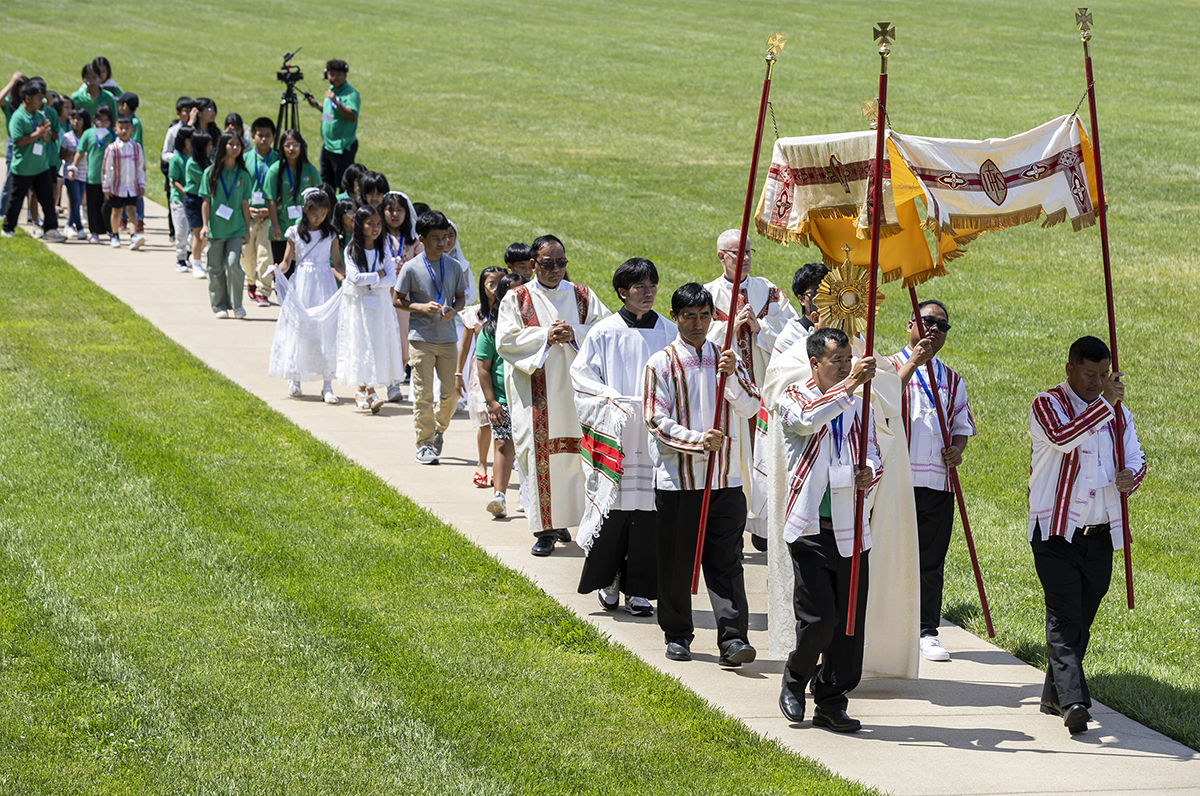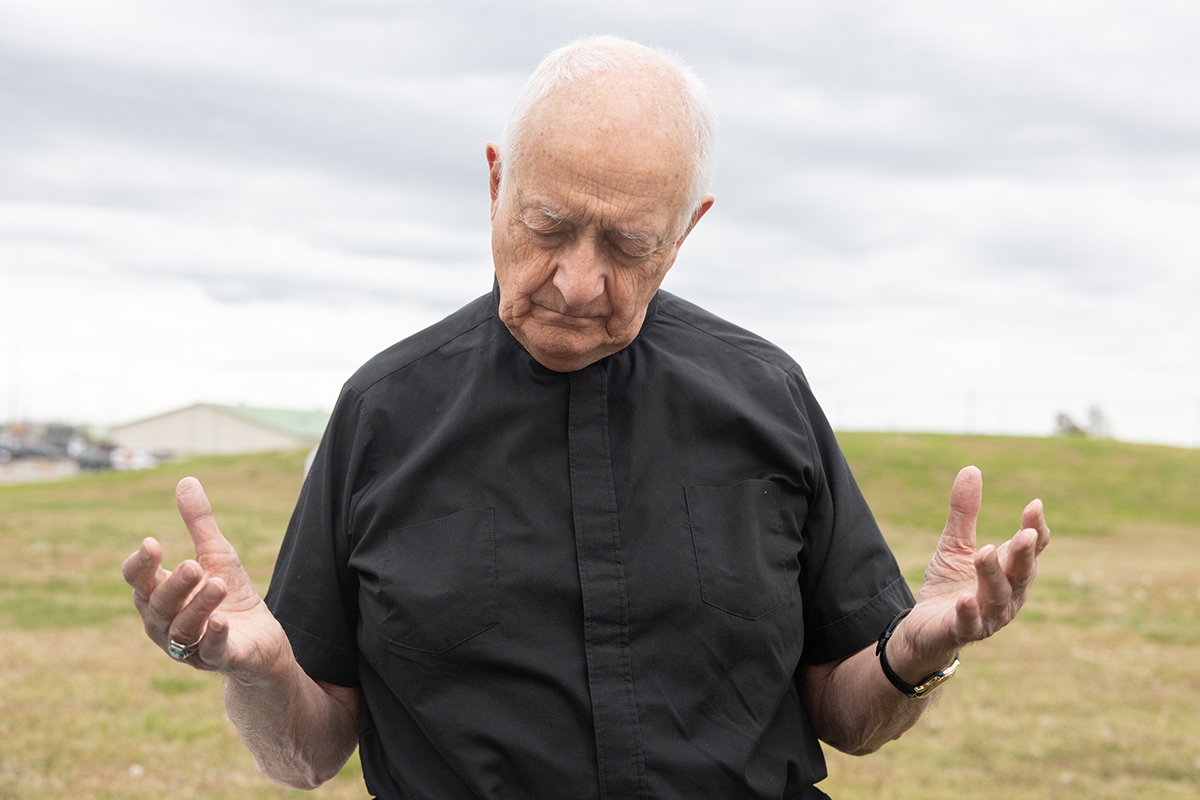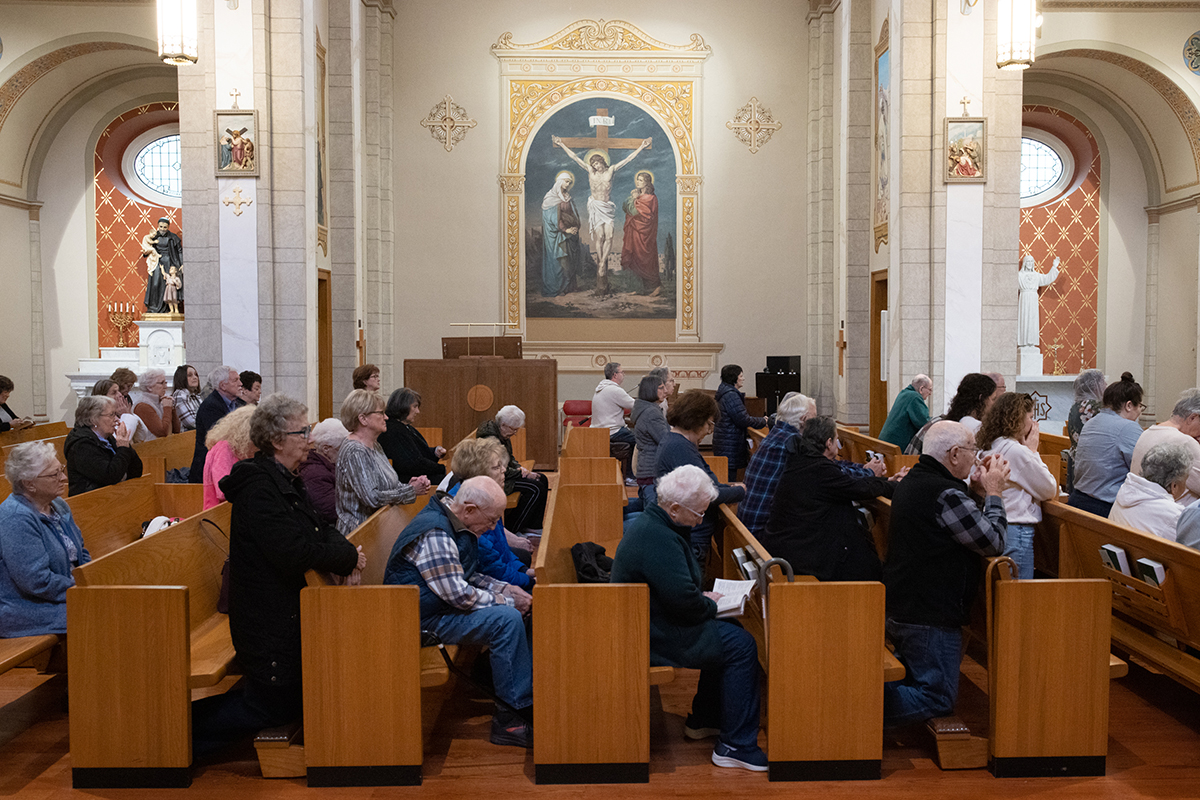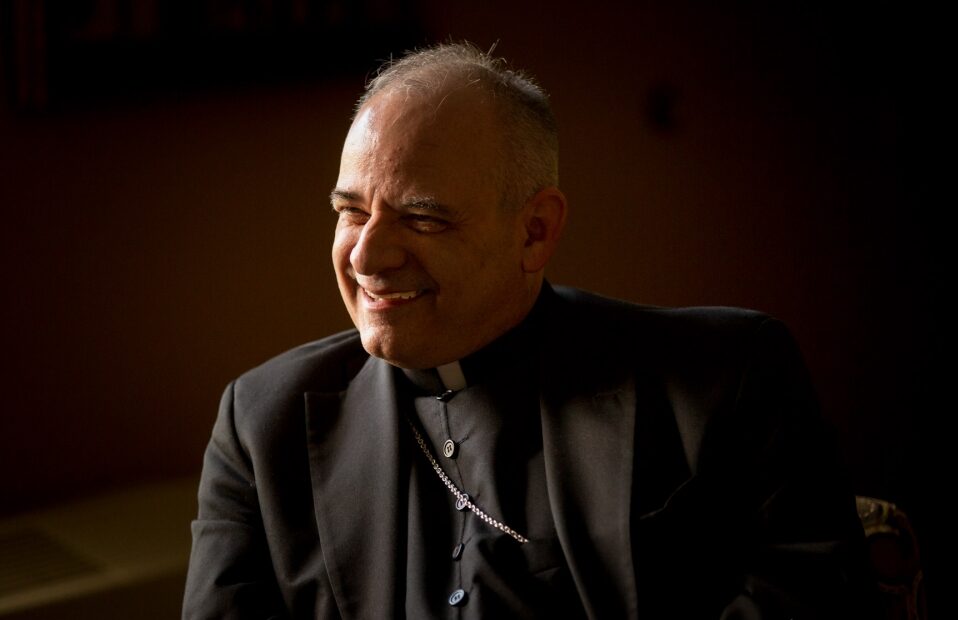Irish relative of Cardinal Glennon digs into his legacy

Kevin Glennon and his fiancée peruse material in archives, visit city where the cardinal lived
“Do you see a resemblance?” Sofia Armesto asked Kevin Glennon as she held up a photo next to him of his great-granduncle, Cardinal John Joseph Glennon.
Kevin, from Ireland, and his fiancée from Kansas visited the archives of the Archdiocese of St. Louis May 12 to learn more about Cardinal Glennon, a native of Ireland who led the archdiocese from 1903 until his death in 1946. Among other things, Cardinal Glennon was known as “the Cathedral Builder” because of his work in the construction of the Cathedral Basilica of St. Louis at the corner of Newstead Avenue and Lindell Boulevard.
Kevin’s hometown is Corlastown, just outside Kinnegad — Cardinal Glennon’s hometown — and about 40 miles outside Dublin at the junction of two of Ireland’s main east-west roads. Kevin’s the oldest of 10 children in his family.
He and Sophia enjoyed seeing the many photos of Cardinal Glennon in the archives and various correspondence such as letters of congratulations from around the world the cardinal received upon various milestones, including one from President William Howard Taft. They also learned that when Cardinal Glennon died 75 years ago, he had just $32 and a pair of cuff links, having given away every other possession of worth.
After arriving in St. Louis late May 10, Kevin and Sophia already visited the Gateway Arch National Park and the Cathedral Basilica of Saint Louis, and met briefly with Archbishop Mitchell Rozanski. They later visited the St. Louis Zoo and ran out of time for a visit to Glennonville, Missouri, hoping to come back another time to check out the community in Dunklin County built up by German Catholics and named after Cardinal Glennon. Cardinal Glennon inaugurated a program known as the Colonization Movement, where he invited immigrants to come from Italy, Austria, Russia, Poland and Germany to his diocese. He helped by building up rural communities and giving aid in the form of parishes and priests to staff the churches. In Dunklin County, for example, he purchased 12,000 acres of land in 1905 and gave it to homesteading Catholic families.
It’s Kevin’s second time in St. Louis, following a stop here in 2017. Sophia, who lives in St. Marys, Kansas, met Kevin on a vacation in Ireland. They met through a mutual friend after attending a Mass at St. John Church in Dun Laoghaire, south of Dublin.
Kevin’s grandparents often mentioned their family member who went off to America and became a cardinal. “He died in the president’s house in Ireland,” Kevin said. “That’s about all we were told growing up. But he was always held in very high regard at home.”
Kevin kept a biography of Cardinal Glennon handy while visiting St. Louis. His grandfather, who was only 14 when Cardinal Glennon died, had few memories of his uncle, mostly from the funeral procession — the big, black carriage.
Kevin and Sophia are considering a return to St. Louis to have their wedding at the cathedral built by his great-granduncle, though they haven’t yet inquired into the details that would entail. Kevin, who worked as a police officer (gardá síochána) in Ireland, has a younger brother, John Joseph, named after the cardinal. “I’ll have to get him out here sometime,” Kevin said.
>> Cardinal Glennon

Cardinal Glennon was born June 14, 1862, at Kinnegad, County Meath, Ireland, one of eight children of Catherine and Matthew Glennon.
When he was 16, he enrolled at All Hallows College in Dublin where he took two years of philosophy and three years of theology. The faculty of secular priests from many dioceses in Ireland considered the ability to preach of prime importance, and the students were specially trained in sacred eloquence. Cardinal Glennon became a gifted orator.
After graduation from the college at age 21, he was considered too young for ordination to the priesthood. At the invitation of Bishop John Joseph Hogan of Kansas City, Missouri, the young man from Ireland arrived there as a student and lived at the bishop’s residence, serving as his secretary and tutoring theological students. He was ordained a priest Dec. 20, 1884, by Bishop Hogan in the Cathedral of the Immaculate Conception in Kansas City.
Assigned to St. Patrick Parish in Kansas City, he was named administrator of the parish during the illness of the pastor. When the pastor returned, the then-Father Glennon went to Europe for studies, including the German language.
Returning to his diocese in 1887, he was appointed administrator of the the cathedral parish in Kansas City, then as vicar general and in 1893 as administrator of the diocese. He was selected as coadjutor bishop in 1896. In 1903, he was named coadjutor bishop to Archbishop Kain in St. Louis and upon Archbishop Kain’s death later that year became Archbishop of St. Louis. Cardinal Glennon led the archdiocese for nearly 43 years.
One of his first plans was to build a new cathedral to replace the one close to the riverfront. He was known for the construction of other buildings under his watch, including Kenrick Seminary and St. Louis Preparatory Seminary (later named Cardinal Glennon College). Cardinal Glennon ordained nearly 1,800 priests for the Archdiocese of St. Louis and 3,000 for other dioceses and religious orders. He established more than 90 parishes.
Eventually made a cardinal, he died in 1946 at age 83 in Ireland a few days after he received the red hat in Rome. It was just before he was to have celebrated 50 years as a bishop.
“Do you see a resemblance?” Sofia Armesto asked Kevin Glennon as she held up a photo next to him of his great-granduncle, Cardinal John Joseph Glennon. Kevin, from Ireland, and … Irish relative of Cardinal Glennon digs into his legacy
Subscribe to Read All St. Louis Review Stories
All readers receive 5 stories to read free per month. After that, readers will need to be logged in.
If you are currently receive the St. Louis Review at your home or office, please send your name and address (and subscriber id if you know it) to subscriptions@stlouisreview.com to get your login information.
If you are not currently a subscriber to the St. Louis Review, please contact subscriptions@stlouisreview.com for information on how to subscribe.






